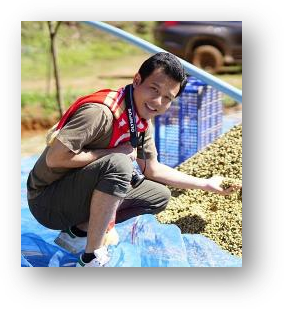



กาแฟสายพันธุ์อราบิก้า มีวิวัฒนาการจากการผสมพันธุ์ตามธรรมชาติจาก 2 สายพันธุ์หลัก คือ
สายพันธุ์ Kouilou หรือ โรบัสต้า รุ่นก่อนๆที่ยังไม่ได้แยกย่อยสายพันธุ์ คือ
ซึ่งมีความไม่ชัดเจนว่าสารพันธุ์ใดเป็น สายพันธุ์ดั้งเดิม แต่….จากการทดลองไม่นานมานี้ มีความเป็นไปได้สูงว่า C. Canephora เป็นสายพันธุ์ดั้งเดิม ด้วย C. Eugenioides เป็นสายพันธุ์หลักและมีสายพันธุ์ C. Canephora มาผสม จึงทำให้ทั้ง 2 นี้เป็นสายพันธุ์เหมือนกับ แม่-พ่อ
หากเรียงตามความใกล้เคียงแล้วนั้น จะพบว่าอราบิก้า มีความใกล้เคียงเรียงลำดับตามนี้
ข้อมูลล่าสุด คาดการณ์ว่าประมาณ 25,000 ปีที่แล้ว หรืออาจระหว่าง 50,000 ปีถึง10,000 ปีที่แล้ว (Cenci, 2012) ในแถบแอฟริกาตะวันออก อย่างเช่น
พบที่ป่าแถบตะวันตกของอูกานดา ท้องถิ่นเรียกว่ากาแฟ Nandi ซึ่งมีแหล่งกำเนิดดั้งเดิมเดียวกันได้แก่
ซึ่งมีความสูงตั้งแต่ 1,500 – 2,200 เมตร ปัจจุบันได้สูญพันธุ์ไปจากแหล่งกำเนิดไปเกือบหมดแล้ว
The botanical genus and species name for Robusta coffee, described over 100 years after C. arabica. One of the two diploid parent plants of C. arabica. Originated in western and central sub-Saharan Africa. A Cproductive commercial crop distinct from Arabica by physical and chemical attributes, including higher productivity and caffeine content.
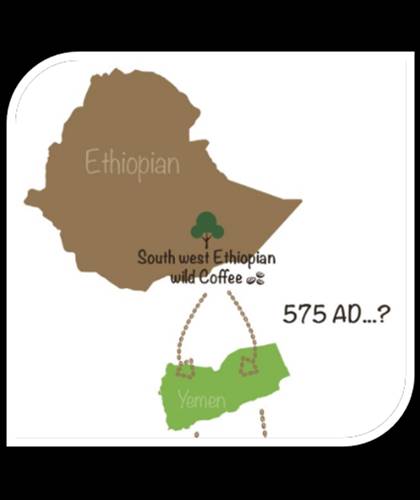
Coffee was brought to Yemen sometime before the 8th Century. Genetic comparisons to Ethiopian varieties show that these coffees likely came from Southeast Ethiopia where they group with some selections found in Sidamo
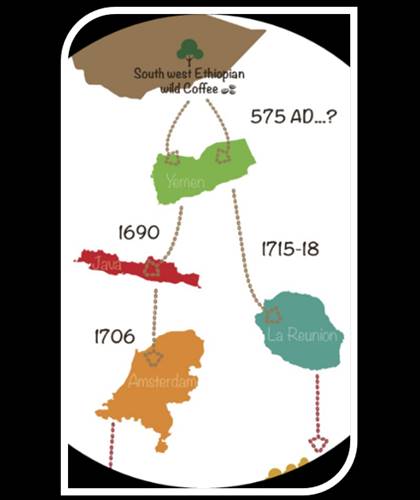
From Yemen, coffee was transported around the world. The cultivated varieties typica and bourbon came from selections from Yemen.
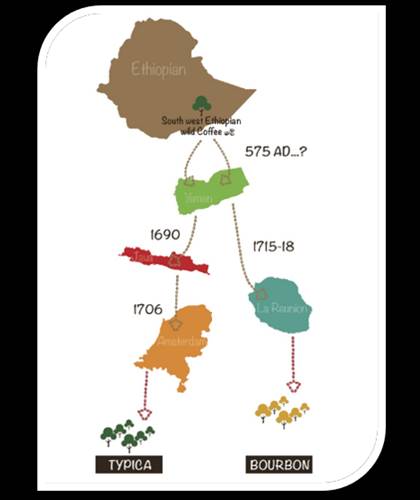
From Yemen, coffee was transported around the world. The coffees that we call typicas today originated from plants that left Yemen and were taken in 1670 to Java and outlying Islands, possibly by the Dutch, possibly with some transport by the mythical monk Baba Budan around 1675
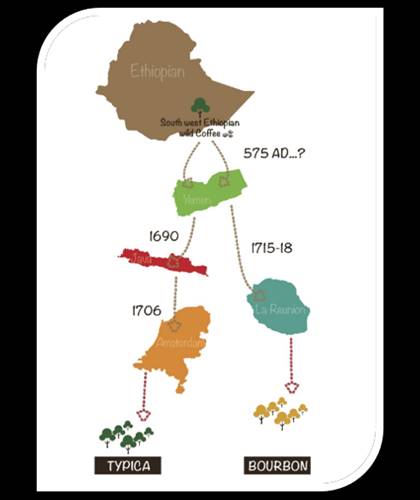
The French attempted to introduce this coffee from Yemen to Reunion Island (then called Isle Bourbon after French Royal house of Bourbon) in 1708 but none of the plants survived.
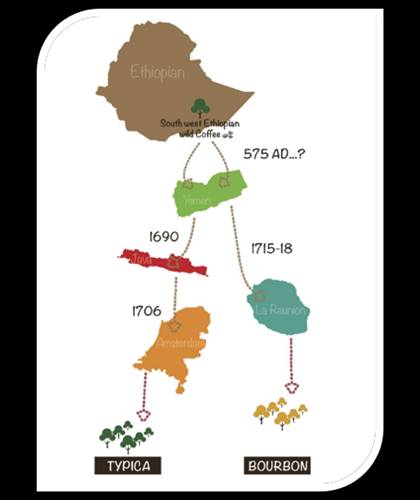
The second introduction was successful, 60 coffee plants were brought from Yemen to Reunion island in 1715, 25th September. 20 of these plants survived the journey. The Martin brothers of Saint Denis were instructed to take care of the trees. Eventually most died and only 2 remained.
The second introduction was successful, 60 coffee plants were brought from Yemen to Reunion island in 1715, 25th September. 20 of these plants survived the journey. The Martin brothers of Saint Denis were instructed to take care of the trees. Eventually most died and only 2 remained.
Eventually 1 of the 2 plants died. From the 1 remaining tree 117 seedlings were produced. Only grown on Reunion Island until the 1850’s
A third introduction was apparently made from Yemen in 1718
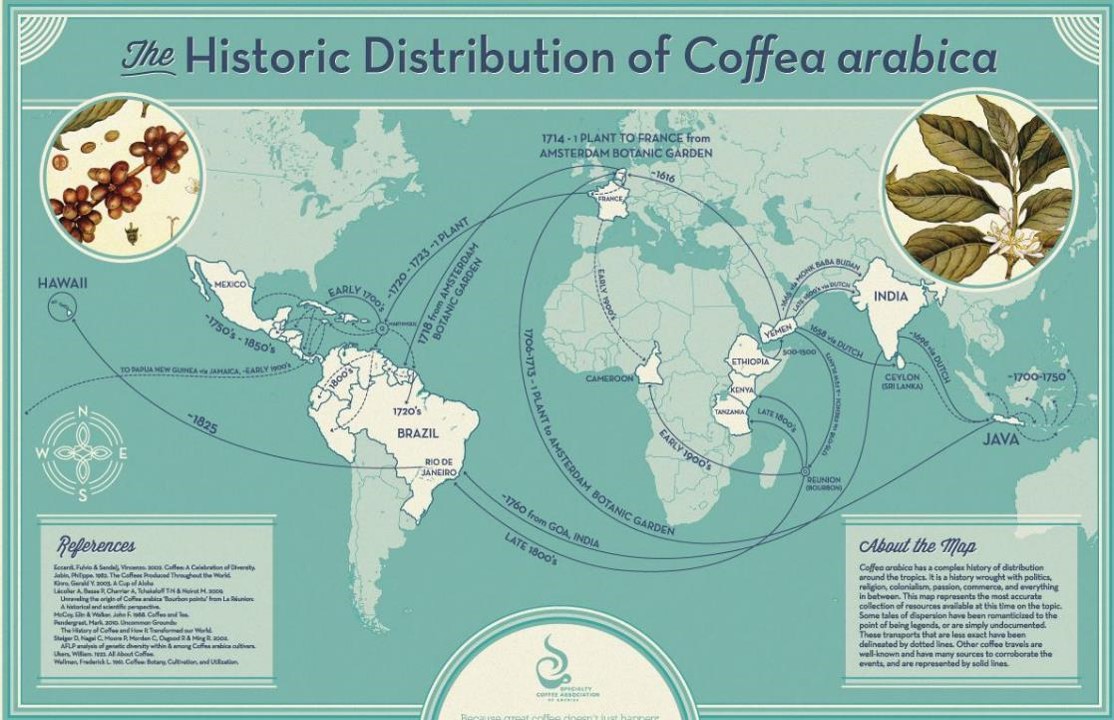
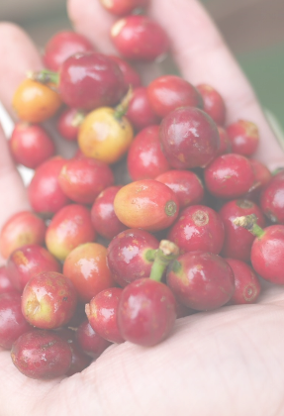
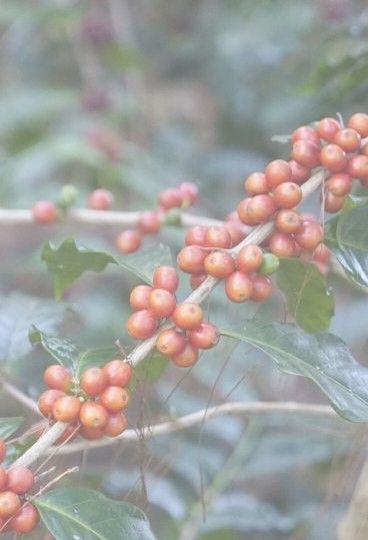
Typica Many early varieties are selections made from typica for characteristics like bean size, improved yields.
A common cultivar C. arabica that naturally developed naturally on Île Bourbon (an island in the Indian Ocean, east of Madagascar, now known as Réunion) from coffee brought to the island from Yemen by the French. Depending on the specific sub-group, this coffee can be red (Vermelho) or yellow (Amarelo). These plants generally have broader leaves and rounder fruit and seeds than Typica varieties. Stems are stronger and stand more upright than Typica. They are susceptible to all major diseases and pests
SL28
A tall cultivar selected and bred by Scott Labs in Kenya, considered by many to be a Bourbon-type cultivar. It has been widely reported to be an Ethiopian selection brought from Tanzania due to its relative drought tolerance, although its exact parentage is not widely known. It grows vigorously, produces a moderate yield, and is susceptible to all main diseases and pests. It is most widely grown in Zimbabwe.
SL34
A tall cultivar selected from Bourbons by Scott Labs in Kenya. Its exact parentage is not known, although some consider it to be a simple Ethiopian selection, while others believe it is a mutation of Bourbon. It is known to be heartier and more pest and disease resistant than SL28. This cultivar shows high productivity in drought and other extreme climate conditions. It has wide leaves with bronze tips. It is one of the main varieties grown in Kenya.
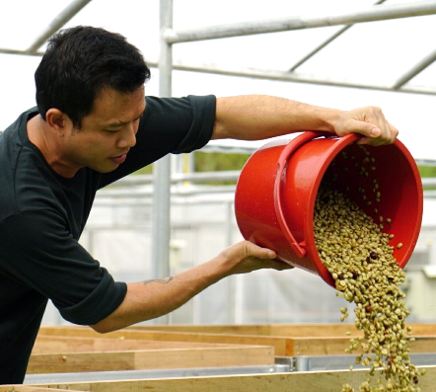
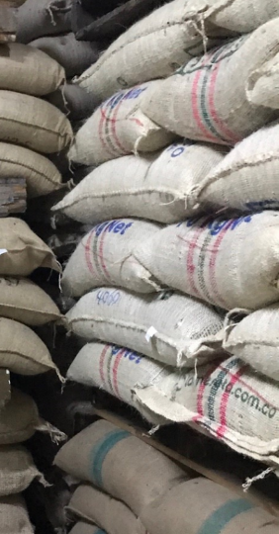
ประกอบด้วย การเตรียมดิน ให้กับกาแฟดิบโดยใช้
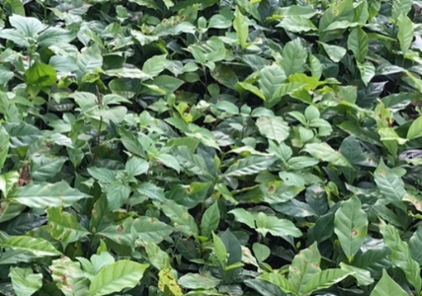
ขั้นตอนนี้ขึ้นอยู่กับ :
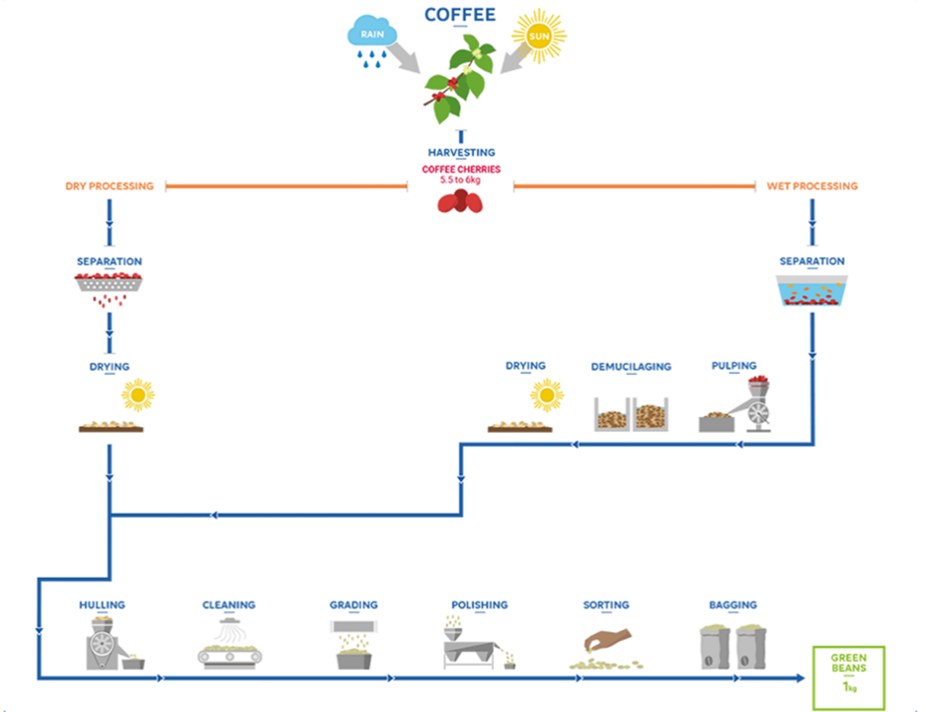
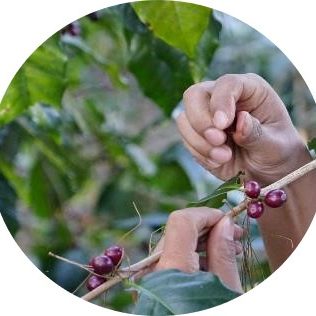
Hand picking
การเก็บด้วยมือ
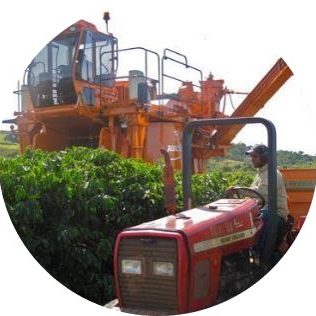
Machine Picking
การเก็บด้วยเครื่อง
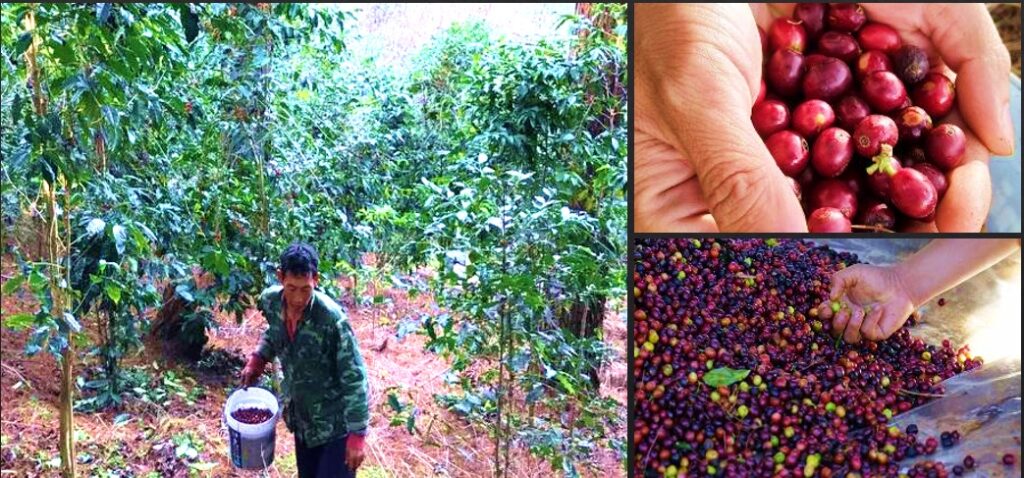
Richmond Office Building FL. 12A, Sukhumvit Rd, Khlong Tan, Khlong Toei, Bangkok 10110 Thailand
02 425 – 1395
Monday - Friday: 9:00 -17:00